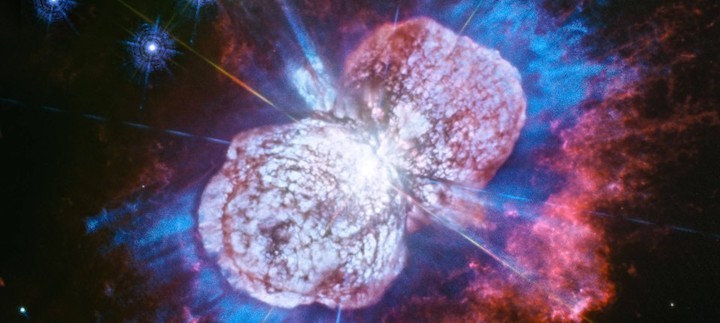27.03.2020

Almost 35 years ago, scientists made the then-radical proposal that colossal hydrogen bombs called novae go through a very long-term life cycle after erupting, fading to obscurity for hundreds of thousands of years and then building back up to become full-fledged novae once more. A new study is the first to fully model the work and incorporate all of the feedback factors now known to control these systems, backing up the original prediction while bringing new details to light. Published this week in the journal Nature Astronomy, the study confirms that the novae we observe flashing throughout the universe represent just a few percent of these cataclysmic variables, as they are known, with the rest "hiding" in hibernation.
"We've now quantified the suggestion from decades ago that most of these systems are deeply hibernating, waiting to wake up, and we haven't yet identified them," said Michael Shara, a curator in the Department of Astrophysics at the American Museum of Natural History who was the lead author on the original study and is one of the coauthors of the new work. "The novae we observe are just the tip of the iceberg. We've been wrong in thinking that the novalike binaries and dwarf novae that make novae represent everything out there. The systems that make novae are much more common than we've thought."
Cataclysmic binary systems occur when a star like our Sun--a red dwarf--is being cannibalized by a white dwarf, a dead star. The white dwarf builds up a critical layer of hydrogen that it steals from the red dwarf, and that hydrogen explodes as a gigantic bomb. This explosion produces a burst of light that makes the white dwarf star up to 1 million times brighter than the Sun for a period of time that can last from a few days to a few months.
Shara's original work proposed that, after an eruption, a nova becomes "nova-like," then a dwarf nova, and then, after a hibernation as a so-called detached binary, it comes back to being a dwarf nova, nova-like, and then a nova, repeating the cycle over and over again, up to 100,000 times over billions of years. "In the same way that an egg, a caterpillar, a pupa, and a butterfly are all life stages of the same organism, these binaries are all the same objects seen at different phases of their lives," Shara said.
For the new study, Shara and his colleagues at Ariel University and Tel-Aviv University in Israel built a set of simulations to follow thousands of novae eruptions and their effects on their red dwarf companions. The goal is to show, quantitatively, that the evolution of cataclysmic binary systems is cyclical and driven by feedback between the two stars.
"There just wasn't the computing power to do this 30 years ago, or 20 years ago, or even 10 years ago," Shara said.
They found that cataclysmic binaries do not simply alternate through each of the four states--nova, nova-like, dwarf nova, and detached binary--their whole lives. Newborn binaries, during the first few percent of a system's life, only alternate between nova and nova-like states. Then, for the next 10 percent of their lifetimes, the binaries alternate through three states: nova, nova-like, and dwarf nova. For the remaining 90 percent of their lifetimes, they continuously cycle through all four states.
Further, the study showed that almost all the novae we observe today occur near the beginning of a binary system's life as opposed to the end--at a rate of about once every 10,000 years rather than once every few million years.
"Statistically, that means that the systems we observe--the ones that are popping off all of the time--are the newborn ones," Shara said. "And that's just about 5 percent of the total binaries out there. The vast majority are in the detached state, and we've been ignoring them because they're so faint and common. We know that they're there. Now we just have to work hard to find them and connect them to novae."
Quelle: AAAS

